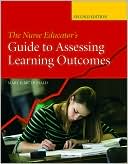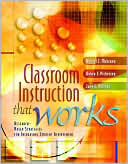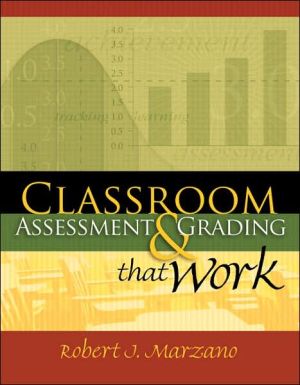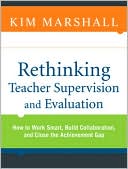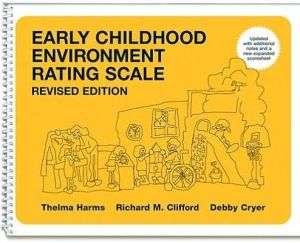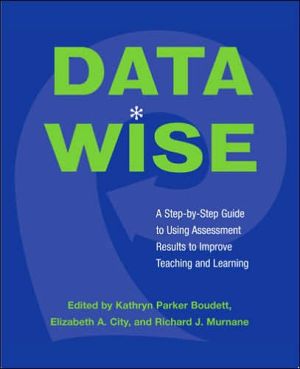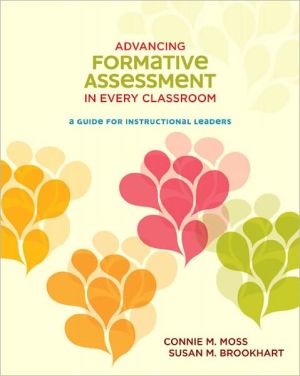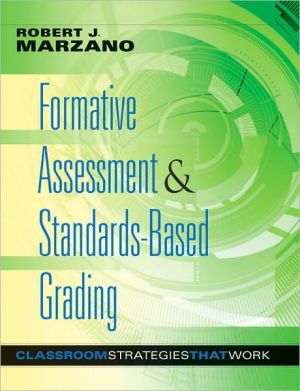Nurse Educator's Guide to Assessing Learning Outcomes
Search in google:
This guide for nurse educators shows how to develop valid classroom multiple-choice exams as part of a systematic assessment plan. The role of multiple-choice testing in assessing critical thinking is discussed, and guidelines are offered for generation of learning objectives, development of the test blueprint, creation of multiple choice items, and analysis of test reliability and individual item responses. There is also material on the language of assessment, administering and scoring a test, establishing evidence of reliability, assigning grades, and instituting item banking and test development software. The author is a nurse educator and educational assessment consultant. Annotation c. Book News, Inc., Portland, OR (booknews.com)
Acknowledgments iiiPreface xiiiThe Role of Assessment in Instruction 1The Process of Assessment 1Ethical Responsibility 3Assessment and Self-Efficacy 3Assessment Inadequacy 4Assessment Competency Standards 5The Need for a Systematic Approach to Assessment 7Assessment Instruments 7Summary 8The Language of Assessment 9Assessment 9Measurement 10Evaluation 11Formative Evaluation 12Summative Evaluation 12Instructional Objectives 13Learning Outcomes 13Blueprint 13Item Bank 14Test 14Interpreting Test Scores 15Criterion-Referenced Tests 15Norm-Referenced Tests 16High-Stakes Tests 17Grade 18Test Bias 18Reliability 19Validity 20Evidence Based on Test Content 21Evidence Based on ResponseProcesses 22Evidence Based on Internal Structure 23Evidence Based on Relation to Other Variables 24Evidence Based on the Consequences of Testing 25Face Validity 25Basic Test Statistics 26Summary 26Developing Instructional Objectives 27Role of Objectives 28Focus of Instructional Objectives 29Stating Instructional Objectives 30Specific Objectives 30General Objectives 31Learning Outcomes 32Mastery (Performance) Objectives 34Developmental Objectives 35Framework for Writing Objectives 37Number of Objectives 38Number of Learning Outcomes 39Taxonomies 41Using Instructional Objectives 43Criteria for Effective Objectives 46Complete 46Appropriate 46Sound 46Feasible 47Relevant 47Open-Ended 47Delineate Student Behavior 47Shared with Students 48Summary 48Assessing Critical Thinking 49Accreditation Outcomes 49Establishing Evidence of Validity 50Defining Critical Thinking in Nursing 50Sample Definition of Critical Thinking in Nursing 51Instructional Objectives and Learner Outcomes 52Behaviors Associated with the Characteristics of Critical Thinking 53Possesses an Analytical Attitude 53Demonstrates Sensitivity to Context 54Questions Assumptions 54Bases Inquiry on Credible Sources 55Considers a Variety of Solutions 55Pursues Ongoing Evaluation 56Tri-Level Critical Thinking Objective 56Critical Thinking Assessment Plan 57Multiple-Choice Exams and Critical Thinking 59Summary 61Implementing Systematic Test Development 63Initiating Test Development 63Scheduling a Semester's Exams 64Identifying the Purpose of the Test 64Determining the Length of the Test 66Selecting What to Test 66Selecting the Appropriate Assessment Format 67Weighting the Content and Course Objectives 69Developing a Test Blueprint 71Reviewing the Blueprint 73Preparing Students for a Test 74Sharing the Blueprint with Students 74Pop Quizzes 75Determining How Difficult a Test Should Be 75Summary 79Selected-Response Format: Developing Multiple-Choice Items 81Advantages of Multiple-Choice Items 82Limitations of Multiple-Choice Items 82Relevance of Multiple-Choice Items 83Item Writing Logistics 83Style Guide 84Electronic Item Development 84Multiple-Choice Format 85Stem Formats 86Question 86Completion 86Item Writing Guidelines 87General Guidelines 88Characteristics of Effective Stems 91Qualities of Effective Options 95Developing the Correct Answer 103Designing Effective Distractors 105Characteristics to Avoid 109Alternate National Council Licensure Examination (NCLEX) Items 115Fill in the Blank 116Point and Click 117Multiple Response 117Chart/Exhibit 118Drag and Drop 118Item Rationale 119Question Difficulty 119Framing Questions in Terms of the Nursing Process 120Item Shells 121Peer Review 123Summary 123Writing Critical Thinking Multiple-Choice Items 125Characteristics of Critical Thinking Items 125Sequential Reasoning 126Language 127Best Answer Format 129Novel Problems 129Applying Learning Outcomes 131Critical Thinking and the Nursing Process 133Summary 134Selected-Response Format: Developing True-False and Matching Items 135The True-False Item Format 135Advantages of the True-False Item Format 136Disadvantages of the True-False Item Format 136Guidelines for Developing True-False Items 137Characteristics of Effective True-False Items 138Flaws to Avoid With True-False Items 141Forms for True-False Item Writing 144Types of True-False Items 144Matching Exercise 148Advantages of the Matching Exercise 149Disadvantages of the Matching Exercise 149Guidelines for Developing Matching Exercises 149Summary 151Constructed-Response Format: Developing Short-Answer and Essay Items 153Short-Answer Item Format 154Advantages of the Short-Answer Item Format 154Disadvantages of the Short-Answer Item Format 154Guidelines for Developing Short-Answer Items 154Characteristics of Effective Short-Answer Items 155Essay Question Format 159Forms of Essay Questions 159Advantages of the Essay Question 162Disadvantages of the Essay Question 162Guidelines for Developing Essay Items 163Suggestions for Scoring Essay Items 164Developing Essay Items to Assess Critical Thinking 164Scoring Rubrics 166Holistic Scoring Rubrics 166Analytic Scoring Rubric 166Developing Scoring Rubrics 167Summary 169Assembling, Administering, and Scoring a Test 171Assembling a Test 171Arranging Items 172Editing and Proofreading 174Formatting 175Providing Directions 177Reproducing 180Maintaining Security 181Administering a Test 182Computer Test Administration 182Physical Environment 184Psychological Environment 184Academic Dishonesty 185Scoring a Test 190Scoring a Classroom Exam 190Statistical Analysis 191Student Review 192Summary 193Preparing Students for the Licensure Exam: The Importance of NCLEX 197The NCLEX Application Process 198Development of the NCLEX 198The NCLEX Practice Analyses 198The NCLEX Test Plan 199NCLEX Item Development 201Characteristics of NCLEX Items 202Cognitive Levels 202Critical Thinking Ability 202Alternate Formats 202Characteristics of the NCLEX 203CAT Format 203Passing Standard 204Logits 205Examination Length 205Preparing Nursing Students for the NCLEX 207Curriculum Focus 207NCLEX Test Plan Consideration 207Classroom Test Development 208Cross-Referencing the NCLEX Test Plans 209Cross-Referencing for Integrated Processes 210Standardized Examinations 211Progression Policies 213NCLEX Predictor Exit Exams 213Facilitating Student Success 217NCLEX Prep Courses 218Summary 219Establishing Evidence of Reliability and Validity 221Reliability 222Measures of Reliability 222Factors Affecting the Reliability Coefficients of Classroom Exams 226Homogeneity of the Test Content 228Measurement Error 231Validity 234Content Validity Index 234Interpretation of the Validity Coefficient 235Summary 236Interpreting Test Results 237Overall Test Data Analysis 238Measures of Central Tendency 239Measures of Variability 241Reliability Coefficient 242Standard Error of Measurement 243Mean p Value 244Mean Biserial 245Score Distribution 245Histogram 246Individual Item Analysis 248Assigning Test Scores 251Flawed Items 251Returning Scores to Students 253Summary 253Laboratory and Clinical Evaluation 253Relevance of Objectives 253Elements of the Clinical/Laboratory Experience 254Identification of Clinical Action Elements 255Identifying Objectives and Outcomes 256Assessing Learning Needs 256Planning Clinical Learning Experiences 257Instructing and Evaluating 257The Professional Role 259Designing and Using a Performance Tool 259Using a Taxonomy 259Assessment of Mastery Learning 261Assessment of Developmental Learning 263Portfolio Assessment 265Implementing a Clinical Evaluation Tool 266Summary 267Assigning Grades 269Grading Principles 269Philosophy of Grading 271What Meaning Should Each Grade Symbol Carry? 271What Should Failure Mean? 273What Elements of Performance Should Be Incorporated in a Grade? 273How Should the Grades in a Class Be Distributed? 273What Components Should Go Into a Final Grade? 274How Should the Components of the Grade Be Combined? 274What Method Should Be Used to Assign Grades? 274Should Borderline Cases Be Reviewed? 274What Other Factors Should Influence the Grading Policy? 275Developing a Grading Plan 275Weighting Components of a Grade 275Pass/Fail Grading 281Adjusting Grades 281Scaling Grades 282Giving Extra Credit 282Dropping the Lowest Grade 282Summary 283Instituting Item Banking and Test Development Software 285Establishing an Item Bank 286Editing Items 287Selecting a Test Development Software Program 291Hardware Requirements 292Item Banking Facility 295Item Importing and Exporting 295Word Processing 296Item Classification 296Supplemental Fields 297Test Assembly 297Scoring and Reporting 298Storage of Item Date History 299Grade Book Facility 299Cost 300Implementing Test Development Software 302Appointing Test Bank Administrators 302Establishing Procedures 303Incorporating Textbook Item Banks 304Summary 306References 309Appendices 319Basic Test Statistics 319Basic Style Guide 321References 327Targeting Cognitive Levels for Multiple-Choice Item Writing 329Sample Item Stems for Phases of the Nursing Process 333Assessment 333Analysis 334Planning 335Implementation 335Evaluation 336Steps for Implementing a Systematic Assessment Plan 339Relationship of Critical Thinking Characteristics to the Nursing Process 341Index 345
